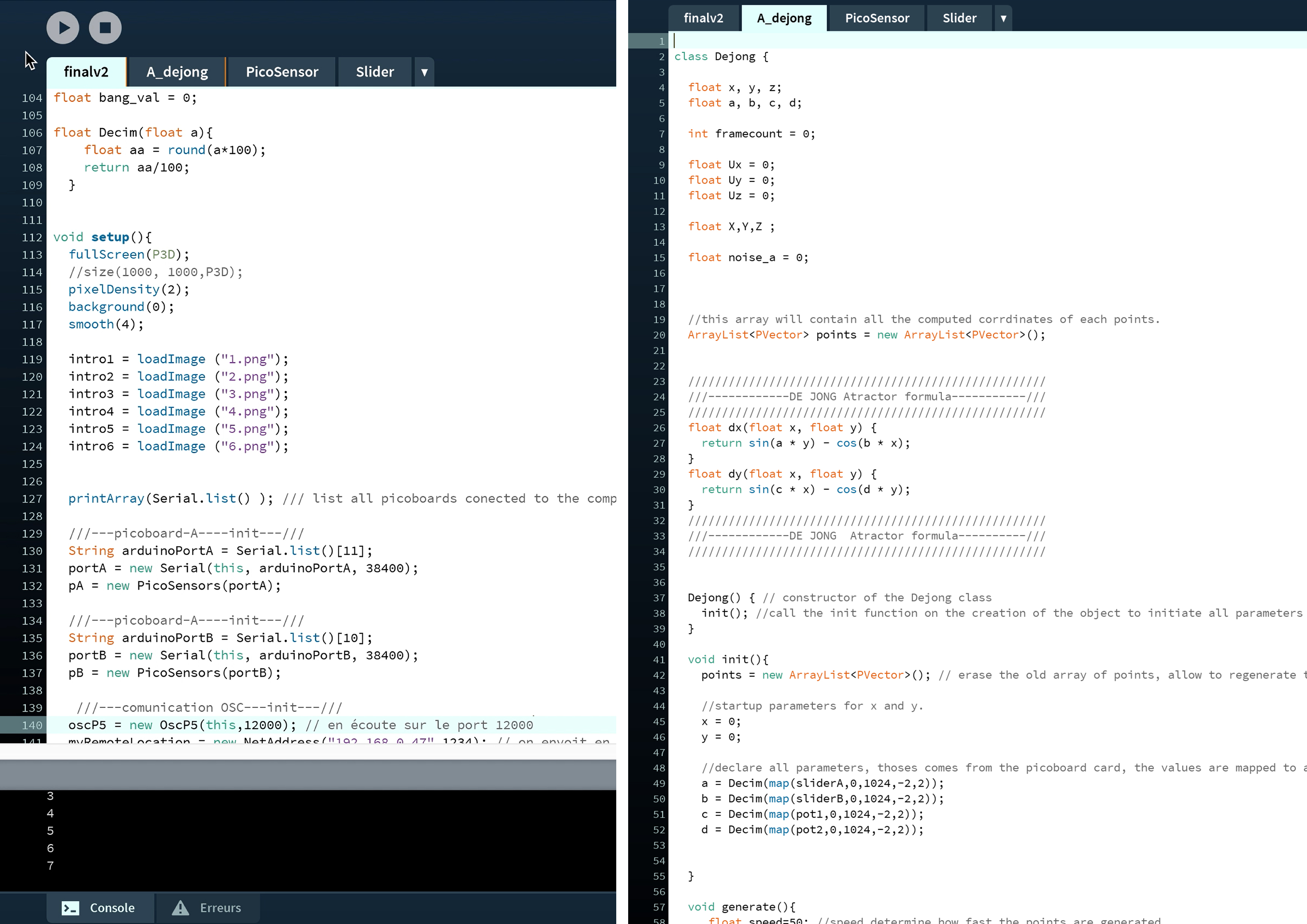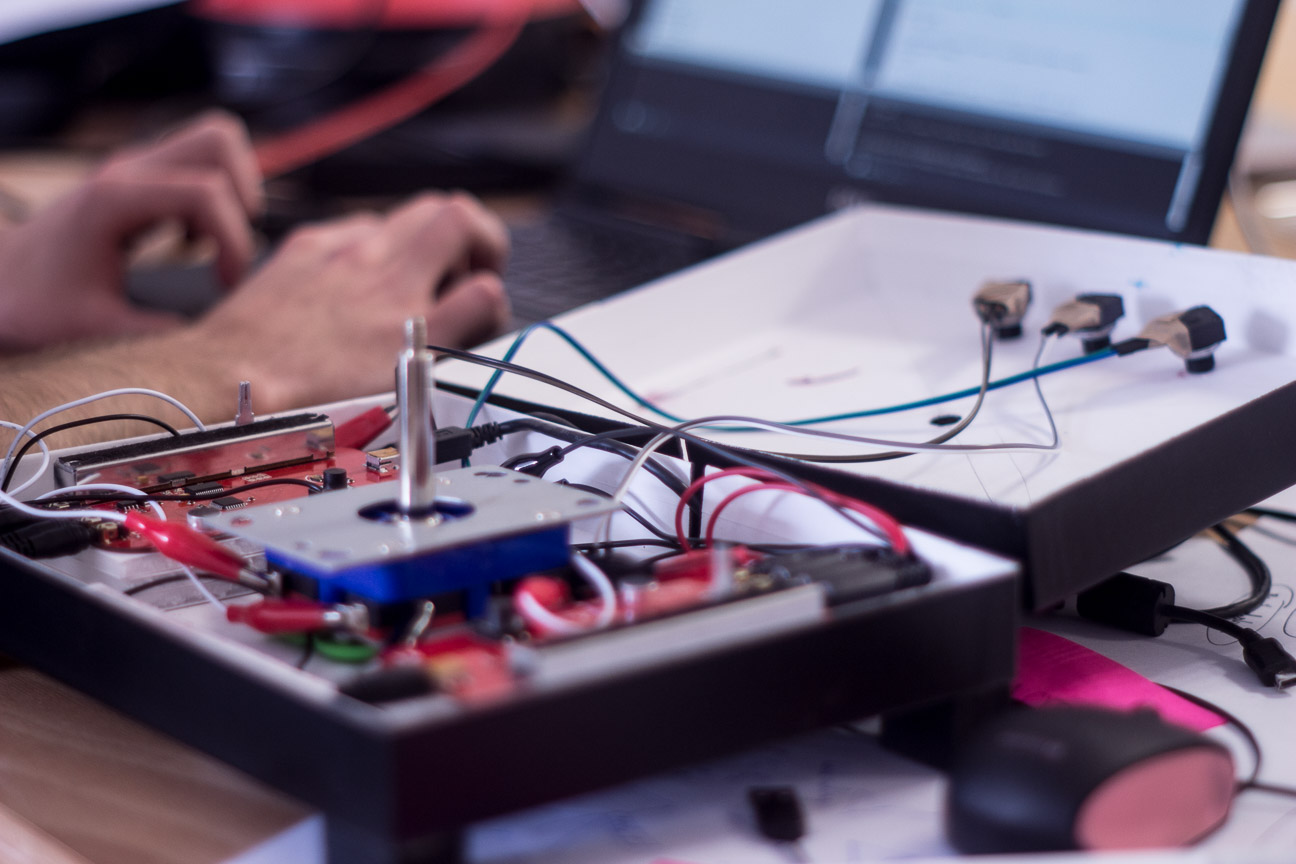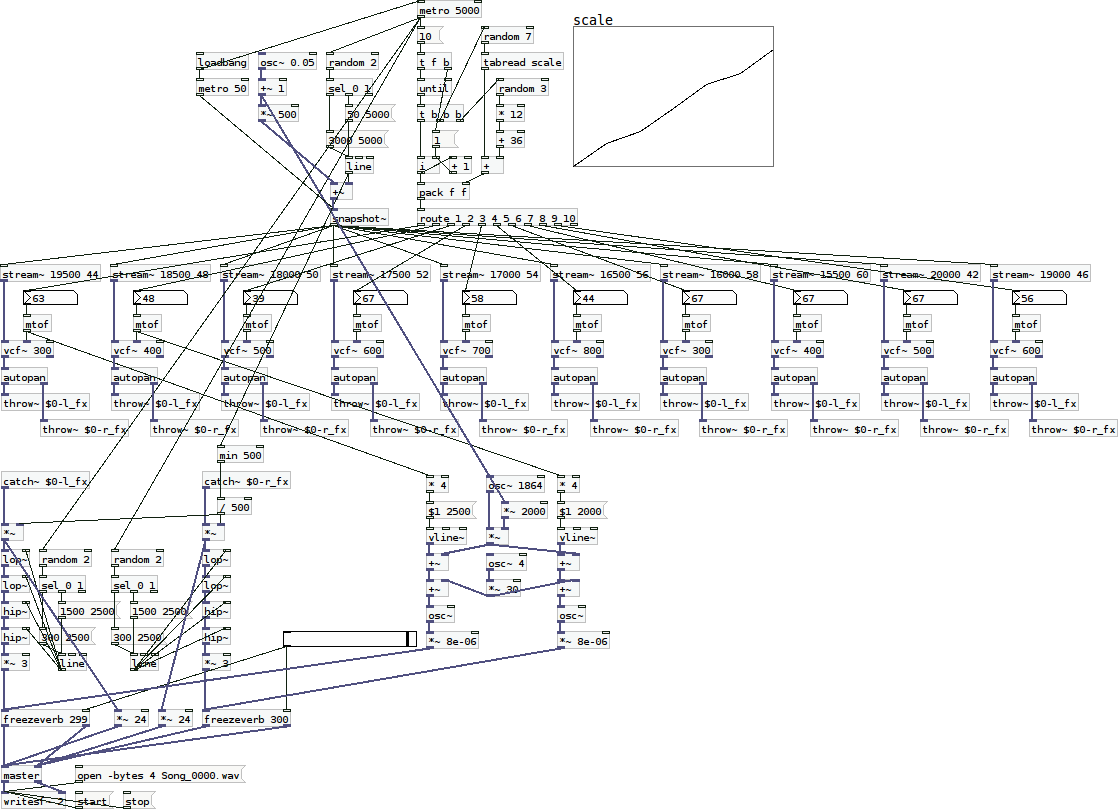DATE
February 2018
SOFTWARE
Processing
Pure Data
SKILLS
Mathematics
Sound Design
Graphic Design
Introduction
We had a week to create an interactive installation in groups of four with two constraints: using the Pico board electronic card and having an artistic purpose. This team was composed of Simon, Theo, Enzo and me.
First of all, Art, what is Art?
The very definition of art is to provoke emotions, feelings, sometimes abstract, sometimes concrete, it is addressed to intuition and intellect. Sometimes it encourages the viewer to reflect on himself, on the society around him and on his relationships
with the outside world. The share of chance, of the random, plays an important role in the emotion transmitted.
Our first ideas
In order to orientate ourselves towards a track, we did various researches that led us to come up with 3 main ideas.
-
Data Visualization:
- Graphical work between the data and the way (here interactive) in which it is represented.
- The idea of transmitting emotion.
- The Flow Field:
- A work of attraction by vectors.
- A flow of points attracted and directed by points of strength.
- The Strange Attractors: :
- Close relationship between mathematics and the arts.
- Represent equations via Processing.
- The attractors of Jong and Lorenz.
-
The idea we kept was the 2D or 3D attractors
What seemed interesting to us in this subject was the hazard part of Chaos theory and strange attractors. These potentially stable formulas can take on a disproportionate scope by changing even a single parameter. They often result in spectacular visuals that provide some satisfaction for the viewer.
Our first tracks
FLOW FIELD
Influence an array of vectors.
GENERATIVE TUNNEL
create immersion and interaction with the spectator.
2D OR 3D ATTRACTOR
Abstract forms, manipulations, making a mathematical formula interactive.
The project development process
Our overall idea was to know how to make mathematical formulas attractive and interactive.
Choice between 3D and 2D attractors: at the beginning of the project, the 2d attractors offered a very satisfactory visual with a studded effect and a very pleasant impression of depth. The 3D attractor was less unique, but it offered many more possibilities. The rest of the project focused on the shape of the zooms on certain places and offered very good visuals. Moreover, the optimization was not perfect, and we had the possibility to make our 3D rendering more attractive. So, we decided to use 3D tractors.
By creating representations of 3D attractors, the viewer would have the possibility to change the parameters of the function to create a chaotic environment, according to his wishes.
The user will be able to move on the 3 axes of the formed structure. The Pico board will make it possible to vary the parameters of the attractors to change the materialized form. A basic music is generated, using the sliders of the Pico board. Sounds will be added to create a new atmosphere.
Make sure that sounds are created by the same mathematical formulas that are used to create shapes. This will enrich the chaotic universe created through visuals. In addition, we directly create a link with generative graphics and random sound.
The integration of visual sliders reinforces the graphic universe. But it allows the user to understand his actions and the impact they have on the attractor.
Randomly, read the coordinates of a point and use them to create a sound. The sound would depend on the x, y and z values of the point.
Evolution of the project
The first steps and the processing tests after having carried out a monitoring work and having developed a base on which we wanted to launch the project.
We also discover the Pico board with the one we will have to work to create interactions.


We started by defining the uses of the Pico board that we thought would be interesting to develop and that would give a plus to our project.
We also decided to work with a joystick, to justify the presence of 3D. So, it could be interesting to move around in space.

We added three potentiometers, in order to multiply the number of interactions with processing, so we learned how to use them.
The sound work managed thanks to pure data software, will allow us to accentuate the chaotic world of production. We have worked on the sound universe so that it is in the continuity of the visual and that these two are linked by interactions in real time, so that it becomes one.

The Code
We have created the code in two distinct parts. The visual is generated on Processing with a 3D rendering engine and the sound is generated with the Pure Data software. The two communicate with each other through an OSC link.
The Controller
Composed of two Pico boards, this controller offers 3 rotary potentiometers, 2 sliders and a 2-axis joystick. The user can vary the generation parameters of the mathematical attractor using 2 sliders and 2 potentiometers, the 3rd potentiometer being used to manage the zoom. The joystick enables you to turn around.
The final result
The result of a one-week team effort, CHAOS is more than just an algorithm, it is an interactive installation. Based on a work on strange attractors and strongly inspired by James Gleick's book "The Chaos Theory", this installation uses strange attractors to produce infinitely diverse visuals.

To manage our Pico boards, joysticks and potentiometers, we have arranged them in such a way that they are organized in a box made by us, in order to make the experience more attractive and simpler.
The attractor evolves over time according to the parameters entered by the user. Changes of state generate a cascade of sound events. At each percussion, a pyramid is randomly generated, and a unique sound is generated from the coordinates of the 4 points.
A debugging mode has been designed to facilitate future developments. It allows to visualize the axes in 3d graduation as well as a cube allowing to position in rotation.
Our desire to continue pushes us to develop our concept until we can present it to StereoLux. A thermal printer would then allow each user to leave with a voucher with the parameters of the figure they generated and a small visual.
Chaos
This installation uses strange attractors to produce infinitely diverse visuals.